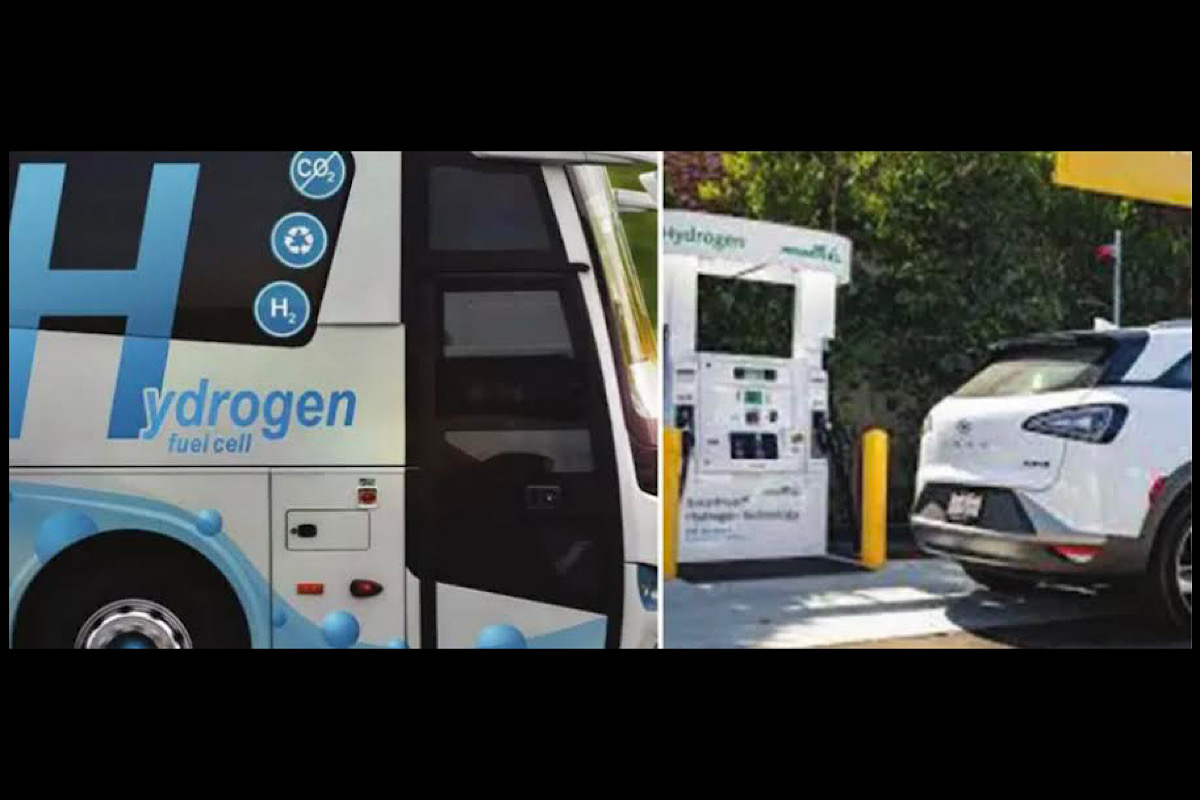Hydrogen fuel cell vehicles (FCVs) are an innovative and promising technology for sustainable transportation. These vehicles use hydrogen fuel cells to generate electricity to power an electric motor, producing only water and heat as by-products.
There are several advantages of hydrogen fuel cell vehicles over conventional gasoline-powered vehicles:
Advertisement
Zero Emissions: FCVs produce no harmful emissions such as carbon dioxide or nitrogen oxides, which can contribute to air pollution and climate change. This makes them a sustainable and environmentally friendly option for transportation.
Advertisement
Efficiency: FCVs are highly efficient, with the potential to convert up to 80 per cent of the energy in hydrogen fuel into electricity, compared to around 25 per cent for internal combustion engines. This means that FCVs can travel longer distances on a single tank of fuel.
Range: FCVs have a longer driving range compared to battery-powered electric vehicles (BEVs) because they can store more energy in a smaller space. This makes them more suitable for long-distance travel and could help alleviate range anxiety, which is a concern for many potential electric vehicle buyers.
Quick Refuelling: Refuelling a hydrogen fuel cell vehicle takes only a few minutes, which is comparable to refuelling a gasoline-powered vehicle. This is much faster than charging a battery electric vehicle, which can take several hours.
Noise Reduction: FCVs are quieter than conventional vehicles because they do not have an internal combustion engine.
Despite the advantages, there are still challenges to the widespread adoption of hydrogen fuel cell vehicles, including the cost and availability of hydrogen fuel and the need for more refuelling infrastructure. However, ongoing research and development efforts are focused on addressing these challenges and improving the performance and cost-effectiveness of this technology.
Hydrogen fuel cell vehicles offer several benefits. Environmental Benefits:
FCVs produce zero greenhouse gas emissions and do not release harmful pollutants such as nitrogen oxides and particulate matter, into the air. This can help improve air quality and reduce the negative impacts of transportation on human health and the environment.
Energy Security: The use of hydrogen as a fuel for FCVs can help diversify our energy sources and reduce dependence on foreign oil. Hydrogen can be produced from a variety of domestic sources, including natural gas, biomass, and renewable energy sources such as wind and solar power
Economic Benefits: The development and adoption of FCVs can stimulate economic growth and create jobs in the energy and transportation sectors. This can help support local economies and promote innovation and technological advancements.
Improved Public Health: By reducing harmful emissions from transportation, FCVs can help improve public health, especially for vulnerable populations such as children, the elderly, and those with respiratory and cardiovascular diseases. Transportation Options: FCVs offer a viable alternative to gasoline-powered vehicles and can help provide more transportation options for consumers. This can help reduce traffic congestion, improve mobility, and increase access to transportation for those who do not own or have access to a personal vehicle.
Overall, the development and adoption of hydrogen fuel cell vehicles have important implications for humans, both in terms of environmental sustainability and socio-economic benefits. While there are still challenges to be addressed, ongoing research and development efforts are focused on advancing this promising technology and making it more accessible and affordable for consumers.
Hydrogen fuel-cell vehicles emit only water vapour and trace amounts of other by-products, so they are generally considered to be a cleaner and more environmentally friendly alternative to traditional gasoline or diesel vehicles. However, when it comes to driving these vehicles through tunnels, there are some additional safety concerns to consider. In a tunnel, the water vapour emitted by hydrogen fuel-cell vehicles can condense into mist, which can reduce visibility, hence potentially create a hazard for other drivers. Additionally, because hydrogen is lighter than air, there is a risk that the leaked hydrogen gas could accumulate near the ceiling of the tunnel, creating an explosive hazard.
To address these concerns, some tunnels have installed special ventilation systems to help disperse any hydrogen gas that may be released by fuel-cell vehicles. These systems are designed to quickly detect any hydrogen build-up and rapidly dilute it with fresh air. Overall, while hydrogen fuel-cell vehicles are generally safe to drive through tunnels, it’s important to take appropriate precautions to minimize any potential risks. This includes ensuring that the ventilation systems in the tunnel are properly designed and maintained and that drivers of fuel-cell vehicles are aware of the potential hazards and take appropriate steps to minimize any emissions.
In a well-ventilated tunnel, the release of water vapour from FCVs is not expected to cause any safety concerns. However, it is important to consider the potential build-up of hydrogen gas in the event of a leak or accident involving an FCV. Hydrogen gas is highly flammable and can pose a fire hazard in an enclosed space like a tunnel. Therefore, safety measures and protocols should be in place to prevent or mitigate any potential risks associated with FCVs in tunnels. These may include proper ventilation systems, regular safety inspections and maintenance of FCVs, and emergency response plans in case of accidents or leaks. Additionally, regulations and standards for the safe operation of FCVs in tunnels may be necessary to ensure public safety.
Fuel cell vehicles (FCVs) are comparatively safe when it comes to hydrogen leakage and fire accidents. However, it is important to understand the behaviour of FCVs in outdoor parking lots in the event of hydrogen leakage and diffusion, and the evolution of fire accidents. Hydrogen is a flammable gas and can ignite when exposed to a spark or flame. In the event of a hydrogen leak, the gas will diffuse rapidly due to its low molecular weight and high diffusivity. The likelihood of ignition depends on the concentration of hydrogen in the air, the presence of a spark or flame, and other factors.
In an outdoor parking lot environment, the diffusion of hydrogen will be influenced by factors such as wind speed and direction, temperature, and the presence of obstacles. The diffusion of hydrogen can be modelled using computational fluid dynamics (CFD) simulations, which can help to predict the concentration of hydrogen in the air and the likelihood of ignition. If a fire were to occur in an FCV, the behaviour would depend on the type and location of the fire. If the fire is in the engine compartment or fuel cell stack, it may be difficult to extinguish using traditional methods such as water or foam. In this case, specialized firefighting equipment may be required. However, it is important to note that the likelihood of a fire occurring in an FCV is relatively low. FCVs have multiple safety features built in, such as pressure relief valves and automatic shut-off valves, to prevent hydrogen leaks and fires. Additionally, FCVs are designed and tested to meet rigorous safety standards, such as the Global Technical Regulation on Hydrogen and Fuel Cell Vehicles.
In conclusion, while hydrogen leakage and fire accidents are potential risks associated with FCVs, the likelihood of such events occurring in an outdoor parking lot environment is relatively low. Advanced safety features and rigorous testing and standards ensure that FCVs are safe for use on public roads.
3D-modelling is needed to investigate a visual simulation to examine the dispersion of hydrogen leaks and potential effects (diffusion and fire). By taking tank blowdown into account, the impacts of various leak diameters (2, 3, and 4 mm), release directions (upward and downward), parking configurations (vertical and parallel), and FGC formation on safety distances could be investigated.
Thermally activated pressure relief devices (TPRDs) are used to mimic the release of hydrogen from a 70MPa hydrogen storage tank while considering the impact of the pressure reduction in the cylinder during the evacuation of the tank on the hydrogen leakage rate. Such studies are useful in risk evaluations in connection with the use of hydrogen as an energy carrier, for nuclear plants, in chemical factories, synthesis gas (gas to liquid processes) and microprocessor factories.
With specialized 3D-modelling software, one can simulate and evaluate to what extent a leak scenario may produce flammable gas clouds in a given scenario, and to what extent the flammable gas clouds may represent a significant risk. It has been possible to simulate hydrogen explosions since before 1990. To conclude, it is extremely essential to create an ecosystem of safety in India before introduction of hydrogen fuel cell vehicles.
The writer is Chair, Environment & Green Hydrogen Committee, PHD Chamber of Commerce & Industry, New Delhi and can be reached at jpglobalconsultinggroup@gmail.com The views expressed are personal
Advertisement











